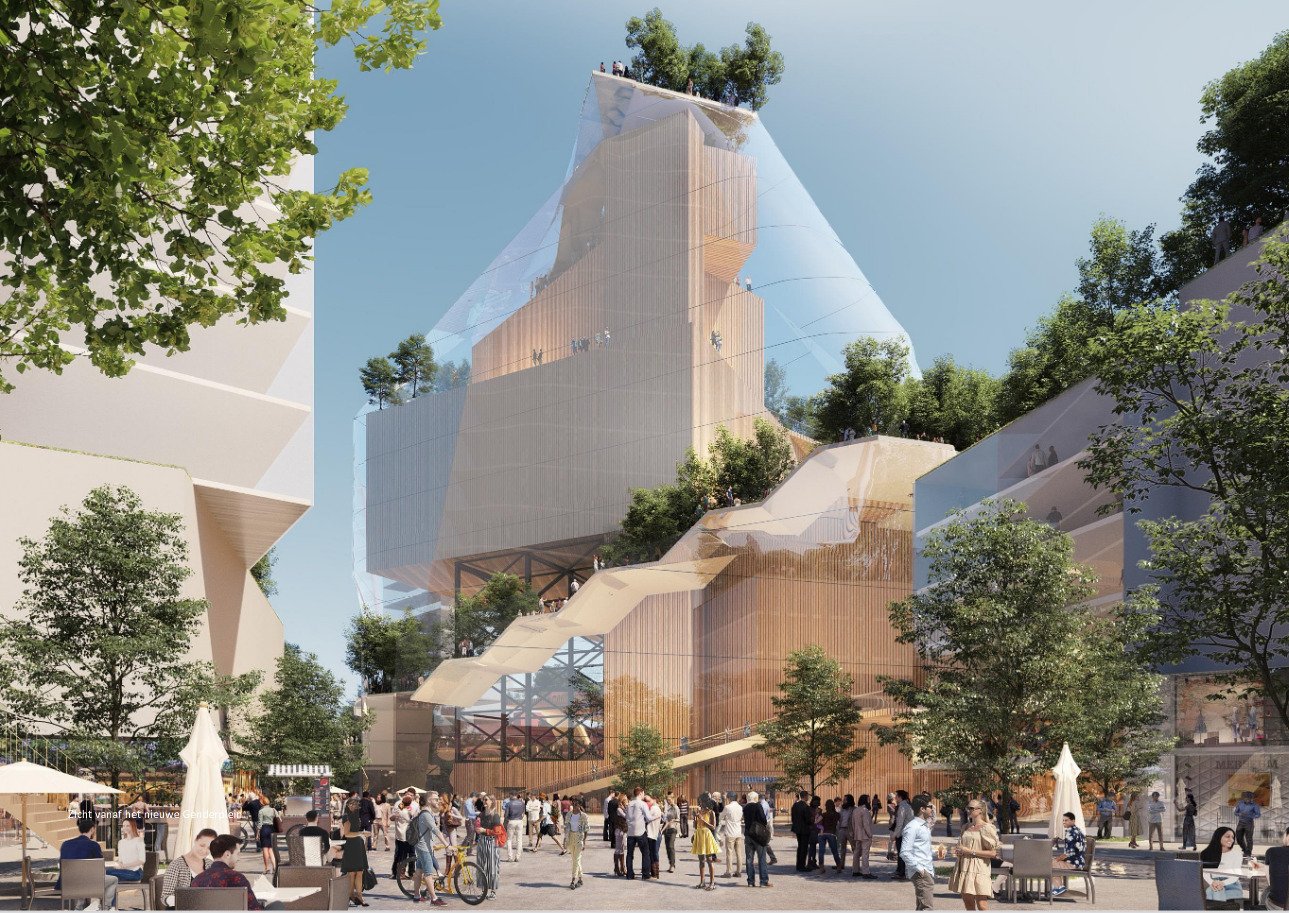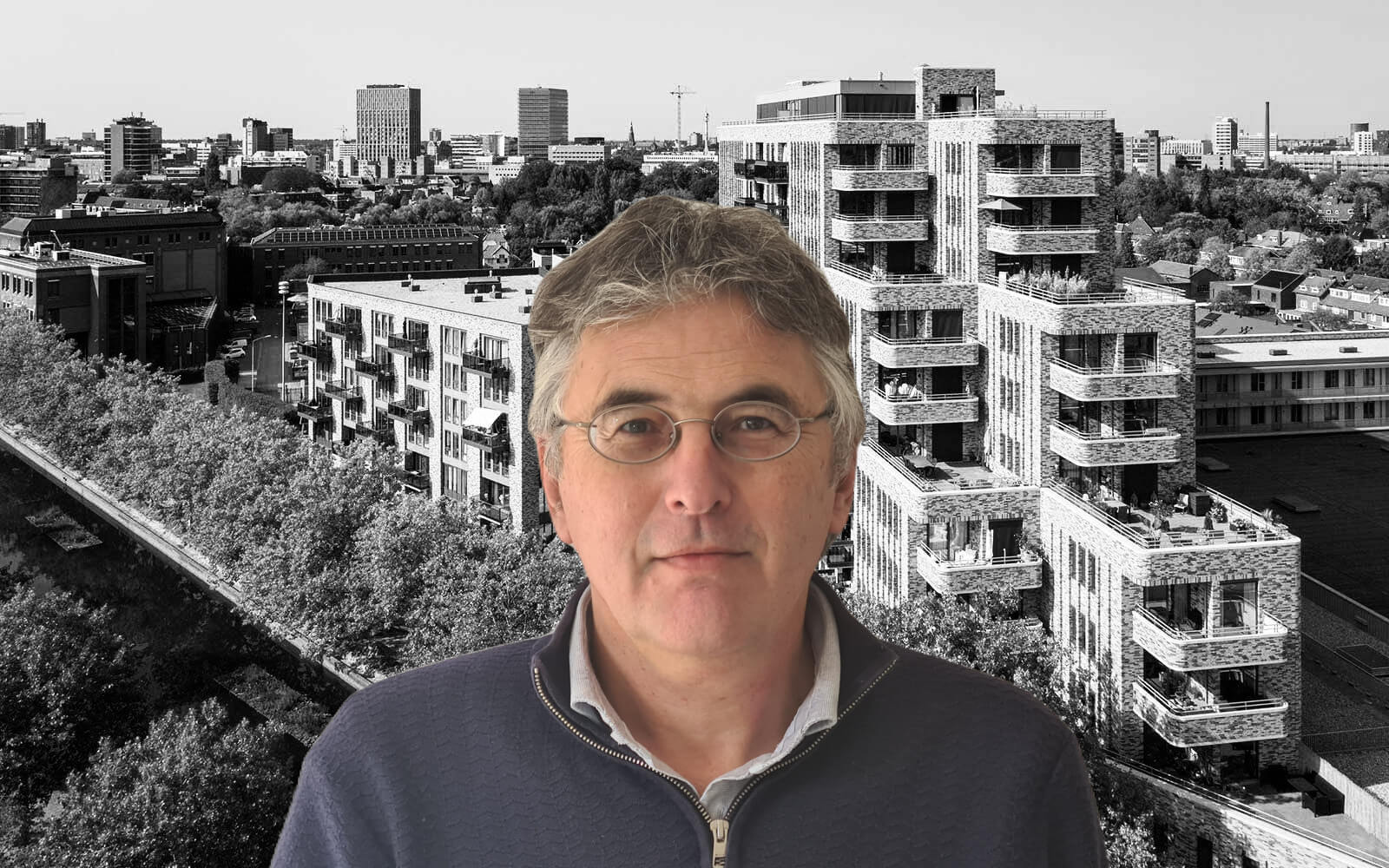
This week, Dutch architect Winy Maas presented the Eindhoven city council with the umpteenth awe-inspiring plan for upgrading Eindhoven’s city center – from the comfort of his car while driving in a parking garage. It is almost impossible to keep up with it all. Eindhoven is transforming at lightning speed from an average provincial town into the quirky center city of the flourishing Brainport region. The former company town is well on the way to doing justice to its envisaged image of having international stature, also in an urban sense now.
It reminds me of an election program that I once wrote about which had the prescient title: “From a City of Pins to a City with Balls. The work of art with the giant tumbling bowling pins at the beginning of Kennedylaan in Eindhoven by the established ‘everyday object enlarger’ artist Claes Oldenburg had just been erected. That should put the city on the map once and for all was the idea. Incidentally, the use of an Oldenburg light bulb was expressly forbidden. I immediately had my doubts, as you might expect. But it does seem to be happening now.
Driven leaders with vision
Not least because a few years ago, Eindhoven managed to snare no fewer than three from the select club of Dutch star architects who are in demand worldwide as supervisors. Adriaan Geuze, Cees Christiaanse and Winy Maas. Three very distinct personalities. Driven leaders with vision. With Maas as the supreme goal-kicker. He tirelessly bombards the city with bursts of ideas and proposals. This is bearing fruit.
Unsightly outlying areas and monotonous industrial estates are being transformed into landscape parks such as the High Tech Campus and the Brainport Park. The latter has also been incorporated into the larger area of the Van Gogh National Park. Old features and functionalities are interwoven and new ones added all over the place. With as its most prominent exponent the ‘Brainport Industries Campus‘ (BIC). A unique ecosystem that spans from vocational secondary school students to start-ups in the high-tech manufacturing industry.
Oversized infrastructure, a typical feature of Eindhoven, is cleverly used to densify the center. Health and climate proofing play a major role, with cutting edge biobased palaces such as the ‘Dutch Mountains‘ springing up in the area. ‘District E‘ marks the beginning of an impressive city gateway where the station itself is changing into a multimodal international mobility hub. The outdated and soulless Heuvelgalerie is transforming into a green music mountain. The NRE site into a lively Industrial Village which already has the allure of a Parisian boulevard. Cohesion, connections, accessibility, walkability. And public access to special places such as the roof garden on top of Strijp TQ, recently prominently featured on national Dutch television during Queen’s Day.
Not demolition, but redevelopment
For a long time now, the industrial heritage that Eindhoven is so well known for has not been demolished, but rather redeveloped. See the brand new plan for the Schellens factory and the recently renamed Campina site. Then there is the Bunkertoren, De Nieuwe Bergen, Domusdela, the VDMA innovation hub … A mix of culture, offices and housing crowned with an urban forest, and I could go on.
New public, new residents, new experiences, a new identity with a whole host of greenery and water. All things that are much more in keeping with the new times. That will create a very appealing, innovative city with plenty of support for extraordinary facilities. A city that will also prove to be much more robust economically as a result.
About this column:
In a weekly column, alternately written by Bert Overlack, Eveline van Zeeland, Eugene Franken, Helen Kardan, Katleen Gabriels, Carina Weijma, Bernd Maier-Leppla and Colinda de Beer, Innovation Origins tries to find out what the future will look like. These columnists, occasionally supplemented by guest bloggers, are all working on solutions in their own way on the problems of our time. So that tomorrow will be good. Here are all the previous articles.

